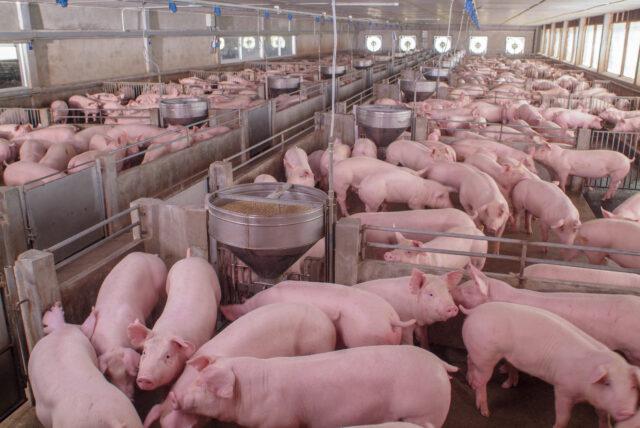Porto Alegre, November 6, 2023 – The year is in its final stretch, and live pig prices are not taking off in Brazil, reflecting a situation of high supply and challenges in terms of domestic demand, even with attractive prices. In the attached graph, it can be seen that the average kilogram of live pigs traded in the Center-South of the country moved sideways between January and October this year. The average price of a live kilogram (preliminarily) in October is BRL 5.99, down 5.74% from the same month last year, when it was at BRL 6.35.
Another noteworthy point is that the price curve for this second half of the year is below that of 2020, 2021, and 2022. There is an expectation of a more favorable environment for prices in the last two months of the year, considering the entry of the thirteenth salary and other bonuses in the economy due to festivities in December; the creation of temporary jobs is another aspect that generates a positive impact on demand. In addition, retailers can seek stock adjustments to meet demand during the period. However, the price curve should close below previous years.
Why are prices unable to advance in Brazil if Brazilian exports are strong and domestic availability is expected to advance discreetly in 2023? According to SAFRAS estimates, availability should close this year at 4.024 mln tons, an increase of 0.38% compared to 4.009 mln tons in 2022. Brazilian exports are largely responsible for this year’s availability adjustment, considering that it must close 2023 with an increase of 8.22%, at 1.187 mln tons, against the 1.097 mln tons shipped last year. Exports are mopping up this year’s production surpluses. Brazil’s 2023 production is estimated at 5.211 mln tons, compared to 5.106 mln tons last year, an increase of 2.06%.
The big issue is not the measured increase in availability this year, but rather the meat supply in Brazil, which has advanced significantly over the last few years, and so far the domestic market has not been able to adapt to the point where prices have increased. It is also worth mentioning that even with affordable prices, pork still ranks third in the preference of the population.
The attached graph shows the evolution of slaughter over recent years. The annual slaughter of pigs in Brazil is expected to close this year with an increase of nearly 8 mln head compared to 2018, pointing out that the data for 2023 are still estimates. From 2019 onward there has been a great increase in investments in Brazil due to the expectation of China’s advance, which actually happened for a period, but the Chinese have already recovered their herds and are operating with less impetus in imports at this time. It is worth noting that a new increase in slaughter is expected in 2024, estimated at 48.960 mln head against the 48.329 mln head expected for this year. The positive point is that there is a slowdown in the rate of slaughter.
Another issue that weighs on the dynamics of live pig negotiations in this second half of the year is the price per ton of pork exported, which has been falling for months, which is bad for the industry’s margins. The volumes exported by Brazil are significant but with prices under pressure. The low price of Brazilian pork is a major differentiator and accounts for this year’s positive results. The European Union, which in recent history is the largest global pork exporter, suffers from high prices due to tight supply, reducing its attractiveness, so Brazil has been able to compete in more markets, especially in Asia.
For the first quarter of 2024, the scenario for Brazilian pig farming should be more challenging than the current moment, considering that pork supply will remain high and demand typically decreases due to seasonal effects. Slaughter will continue to grow, even at a slower pace in 2024, but the average weight of animals may increase due to lower costs than in recent years. It is worth considering that the new soybean crop will be large, barring weather conditions. Corn has fallen significantly since mid-March/2023 and, as a result, the exchange ratio with pigs has improved considerably. Therefore, it is natural to expect an easing of weight-related adjustment measures as seen in the first half of this year.
Follow the Safras Agency on our website. Also follow us on our Instagram and Twitter and stay on top of the main agribusiness news!
Copyright 2023 – Grupo CMA

